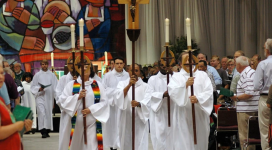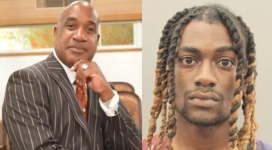Christian colleges and universities are experiencing gender imbalance that some schools experts are calling out for “affirmative action for men.” As the years pass by more women apply to colleges than men that the proportion of male students is coming out to be lower than women.
According to the U.S. Department of Education, the national proportion of male undergraduates at more than 4,000 colleges and universities is 44 percent. That will drop to 42 percent by the end of the decade. More women than men apply to go to medical schools, optometry, pharmacology, and veterinary medicine and receive professional degrees and doctorates whereas bachelor’s degrees awarded to men have fallen from 51 percent to about 44 percent in 1980.
Many female students wonder what happened to men on campus. Yesenia Garcia, a sophomore at Southwestern University in Georgetown, Texas, wishes there could be a few more male students on campus whom she can socialize.
"I'm about to stop going to [the parties]," she said. "What's the point?"
School admissions officials think part of the reason why there is decrease in number of men on campus is due to their increasing interest in computer fields which may not require a college degree. Many schools are putting in more efforts to attract more men to campus.
"We're trying to get guys working at Home Depot to realize that without a degree, they're stuck at the checkout counter," said Frank Nash, admissions director at Bloomfield College in Bloomfield, N.J., where only about 30 percent of the college's 1,800 students are men.
Some colleges offer majors such as computer science and engineering to attract more men. In fact LeTourneau University, a Christian school in Longview, Texas, known for its program in aviation and engineering has more than 60 percent of men.
Seattle Pacific University, a private Christian school in Washington that is experiencing dramatic decrease in number of male students has been trying to present the school as a male-friendly environment by replacing pictures of women in marketing brochures to young men. The female-to-male ratio of the school averaged about 60-to-40 until the 1990s but in 1997, it became 66-to-34. . "Fuschia was changed to burgundy, bright yellow to a deep goldenrod, blue got a smidge darker, and forest green and olive green were also added as accent colors perceived to be more masculine," the school newspaper said.
Not all the colleges are facing gender imbalance. Wheaton College, a Christian school in suburban Chicago, for example, strives to maintain male and female ratio approximately half men, half women despite the larger number of female applicants.
Wheaton's goal is to train Christian leaders to impact the church and society, and to do that "we need to educate males and females," said Shawn Leftwich, director of admissions.
Every liberal-arts school wants to recruit strong male applicants, Leftwich said. She thinks one reason there are less men in Christian colleges is that "as a group, they are not fully in tune with what Christian education is all about."
Leftwich said that some men think they don’t need to attend a Christian college unless they are going to become a pastor or missionary. They seem to prefer to choose a state or a big private school over a Christian institution because they believe a degree from there will increase their chances of getting a good job. However, Lefwich said students can pursue any career they want since education at Christian schools offers much more than preparation for the ministry.
On the other hand, some schools such as Gordon College don’t think there is much of a problem about the decrease in number of male students. Gordon College pays more attention on maintaining geographic and denominational diversity. Admissions director Mering said the school has achieved the goal. Although only about one in three students at Gordon is male, “as far as I know, it works,” she said.







